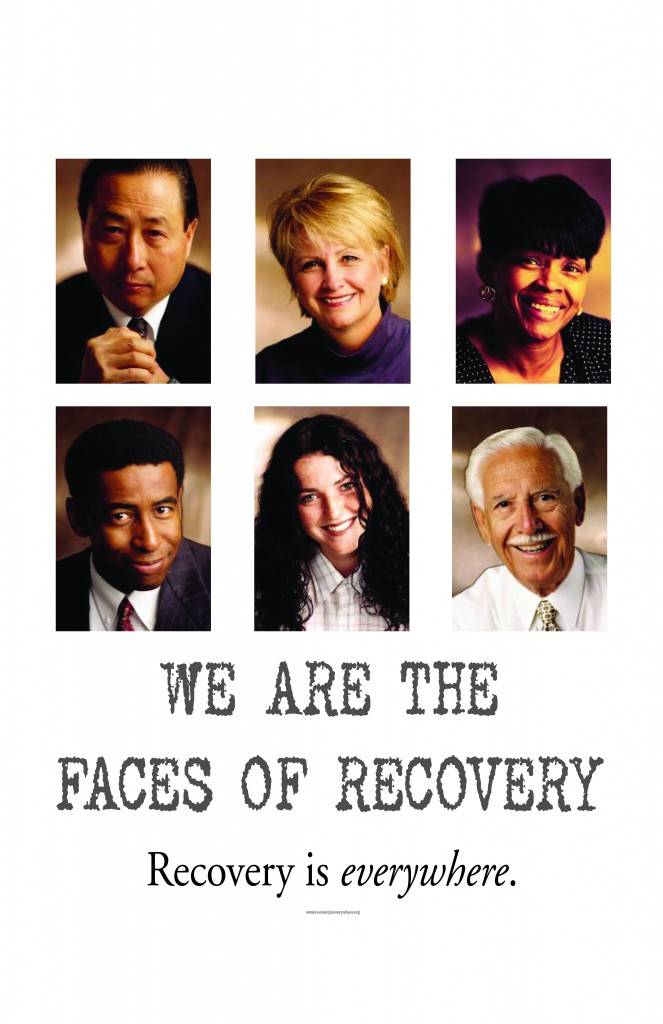
Dr. John Kelly and colleagues just published (Drug and Alcohol Dependence, 181, 162-169) a landmark survey that measured the prevalence and pathways of alcohol and other drug problem resolution among adults living in the United States. Major findings from this study include the following.
Recovery Prevalence The just-published Recovery Research Institute (Massachusetts General Hospital) survey found that 9.1% of U.S. adults report theyuse to have a problem with alcohol or drugs but no longer do. This prevalence rate is comparable to earlier epidemiologic studies on rates of remission for alcohol and drug use disorders (See here for a review) and would translate to approximately 22.35 million U.S. adults who have resolved alcohol and other drug (AOD) problems. The rate of remission for substance use disorders in earlier surveys ranges from 5.3% to 15.3% of the adult population--an estimated 25 to 40 million U.S. adults (not including those in remission from nicotine dependence alone).
Variability of Problem Severity Approximately half of those who had resolved an AOD problem reported indicators associated with greater problem severity, e.g., early age of onset of AOD use, multiple drug use, and past arrest.
AOD Problem Resolution and Recovery Identity Of those who reported having resolved an AOD problem, only 46% identify as being "In recovery." This suggests that people embracing a recovery identity (recovered, recovering, in recovery) are a subset of a much larger pool of people who have resolved AOD problems.
Duration of Problem Resolution Of those who had resolved an AOD problem, 35% reported duration of resolution of 5-15 years, and 29% reported having resolved the problem for more than 15 years. There is a substantial population of American adults in stable, long-term recovery from significant AOD problems.
Assisted versus Unassisted Recovery Of U.S. adults who have resolved AOD problems, 46% resolved these problems without professional treatment or peer recovery support and 54% reported using such supports. Significant differences exist between those with unassisted versus assisted pathways of problem resolution, with the latter associated with greater problem severity, problem complexity (e.g., co-occurring psychiatric diagnosis), and more significant consequences (e.g., criminal justice involvement).
Sources of Assistance The most commonly reported resources used to resolve AOD problems were mutual aid groups (45%) and professional treatment (28%), with 9% reporting use of medication support. While the majority noting use of mutual aid reported participation in Alcoholics Anonymous or Narcotics Anonymous, also evident were other Twelve-Step groups and an increasing variety of secular (Women for Sobriety, SMART Recovery, etc.) and religious (e.g., Celebrate Recovery) recovery mutual aid groups. Of those who had resolved AOD problems, 22% reported using new recovery support institutions, e.g., sober residences, recovery community centers, and recovery ministries.
For nearly two decades, recovery advocates have championed two kinetic ideas: 1) Recovery is a reality (for individuals, families, and communities) and 2) There are multiple pathways of recovery and ALL are cause for celebration. The research of Kelly and colleagues offers substantive scientific evidence in support of both propositions.
Sources
Kelly, J. F., Bergman, B., Hoeppner, B., Vilsaint, C., & White, W. L. (2017). Prevalence, pathways, and predictors of recovery from drug and alcohol problems in the United States population: Implications for practice, research, and policy. Drug and Alcohol Dependence,181, 162-169.
White, W. L. (2012). Recovery/remission from substance use disorders: An analysis of reported outcomes in 415 scientific studies, 1868-2011. Chicago: Great Lakes Addiction Technology Transfer Center; Philadelphia Department of Behavioral Health and Developmental disAbilites; Northeast Addiction Technology Transfer Center.
Related Reading
Arndt, S., V?lez, M. B., Segre, L., & Clayton, R. (2010). Remission from substance dependence in U.S. Whites, African Americans, and Latinos. Journal of Ethnicity in Substance Abuse, 9(4), 237-248.
Calabria, B., Degenhardt, L., Briegleb, C., Vos, T., Hall, W. Lynskey, M., . . . McLaren, J. (2010). Systematic review of prospective studies investigatingremission? from amphetamine, cannabis, cocaine or opioid dependence. Addictive Behaviors, 35(8), 741-749.
Dawson, D. A., Grant, B. F., Stinson, F. S., Chou, P. S., Huang, B., & Ruan, W. J. (2005). Recovery from DSM-IV alcohol dependence: United States, 2001-2002. Addiction, 100(3), 281-292. doi: 10.1111/j.1360-0443.2004.00964.x
Grella, C. E., & Stein, J. A. (2013). Remission of substance dependence: Differences between individuals in a general population longitudinal survey who do and do not seek help. Drug and Alcohol Dependence, 133(1), 146-153.
Price, R. K., Risk, N. K., & Spitznagel, E. L. (2001). Remission from drug abuse over a 25 year period: Patterns of remission and treatment use. American Journal of Public Health, 91(7), 1107-1113.
Spinelli, C. & Thyer, B. A. (2017). Is recovery from alcoholism without treatment possibleA review of the literature. Alcoholism Treatment Quarterly, DOI: 10.1080/07347324.2017.1355219.
White, W. L., Weingartner, R. M., Levine, M., Evans, A. C., & Lamb, R. (2013). Recovery prevalence and health profile of people in recovery: Results of a Southeastern Pennsylvania survey on the resolution of alcohol and other drug problems. Journal of Psychoactive Drugs, 45(4), 287-296.